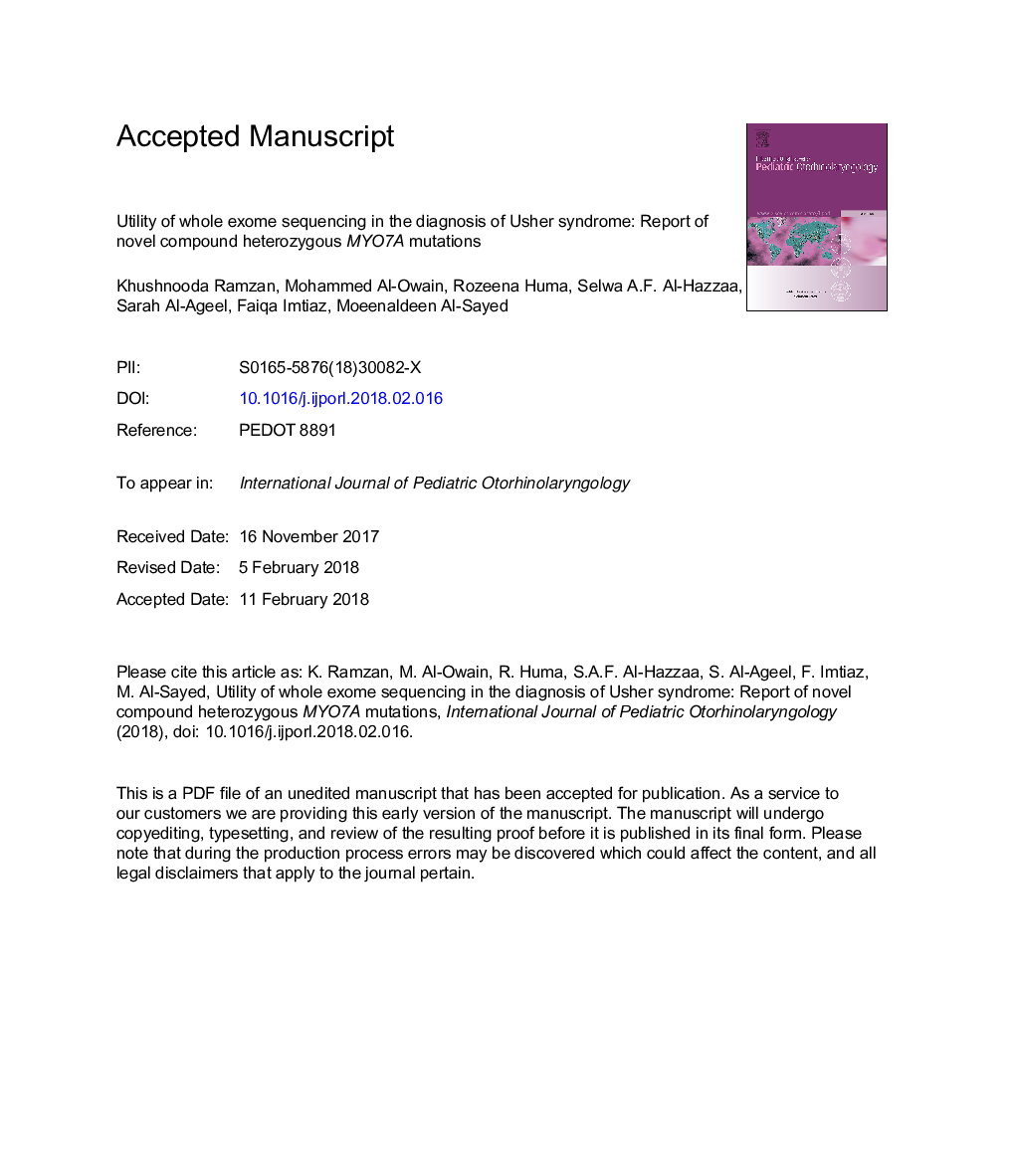| Article ID | Journal | Published Year | Pages | File Type |
|---|---|---|---|---|
| 8806280 | International Journal of Pediatric Otorhinolaryngology | 2018 | 18 Pages |
Abstract
Usher syndrome is a group of disorders, characterized by bilateral sensorineural hearing loss, with or without vestibular dysfunction and retinitis pigmentosa. The index patient, a 2-year-old child was initially diagnosed with nonsyndromic hearing impairment. Homozygosity mapping followed by CES was utilized as a diagnostic tool to identify the genetic basis of his hearing loss. A paternally inherited novel insertion, c.198_199insA (p.Val67Serfs*73) and a maternally inherited novel deletion, c.1219_1226del (p.Phe407Aspfs*33) in gene MYO7A were found in compound heterozygous state in the index patient. The result expands the mutational spectrum of MYO7A. In addition it helped in early diagnosis of the syndrome, for planning and adjustments for the patient, and as well as for future family planning. This study highlights the clinical effectiveness of CES for Usher syndrome diagnosis in a child presented with congenital hearing loss.
Related Topics
Health Sciences
Medicine and Dentistry
Otorhinolaryngology and Facial Plastic Surgery
Authors
Khushnooda Ramzan, Mohammed Al-Owain, Rozeena Huma, Selwa A.F. Al-Hazzaa, Sarah Al-Ageel, Faiqa Imtiaz, Moeenaldeen Al-Sayed,
